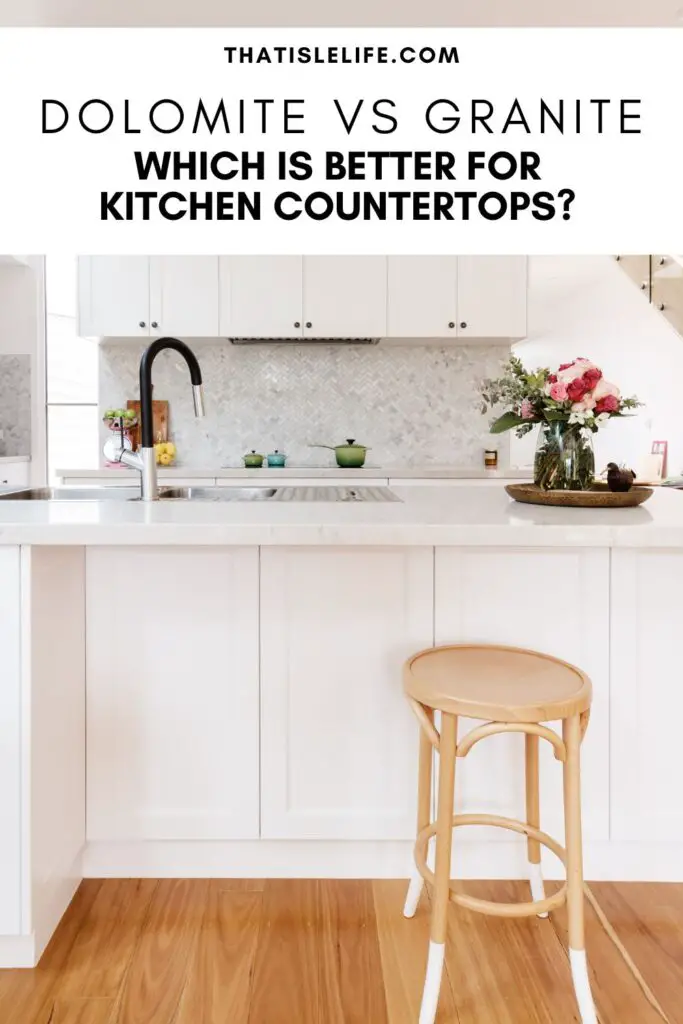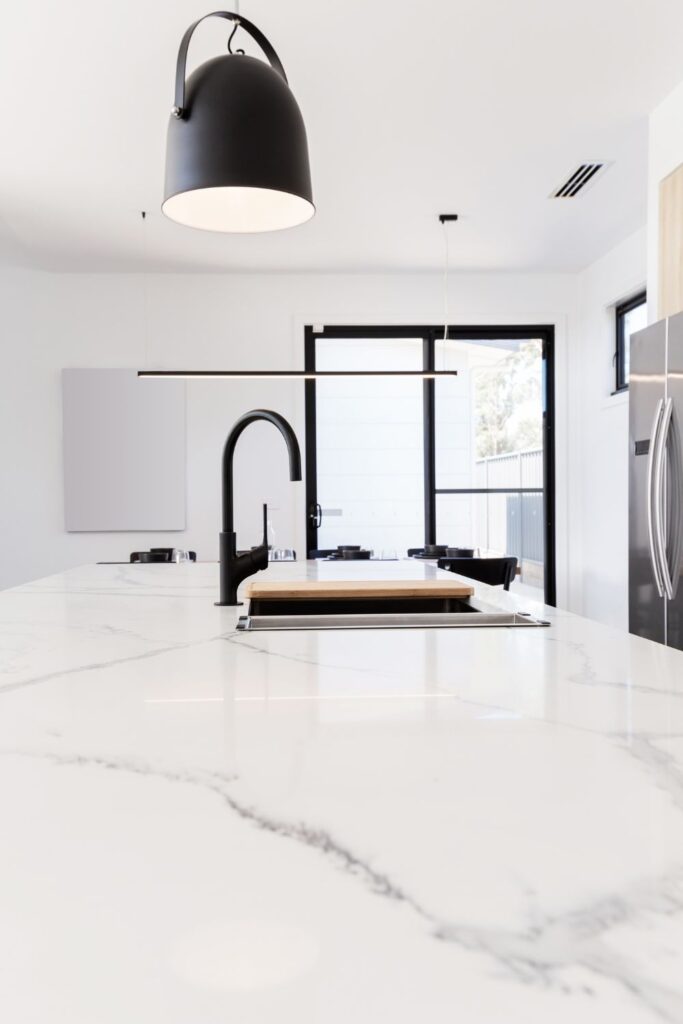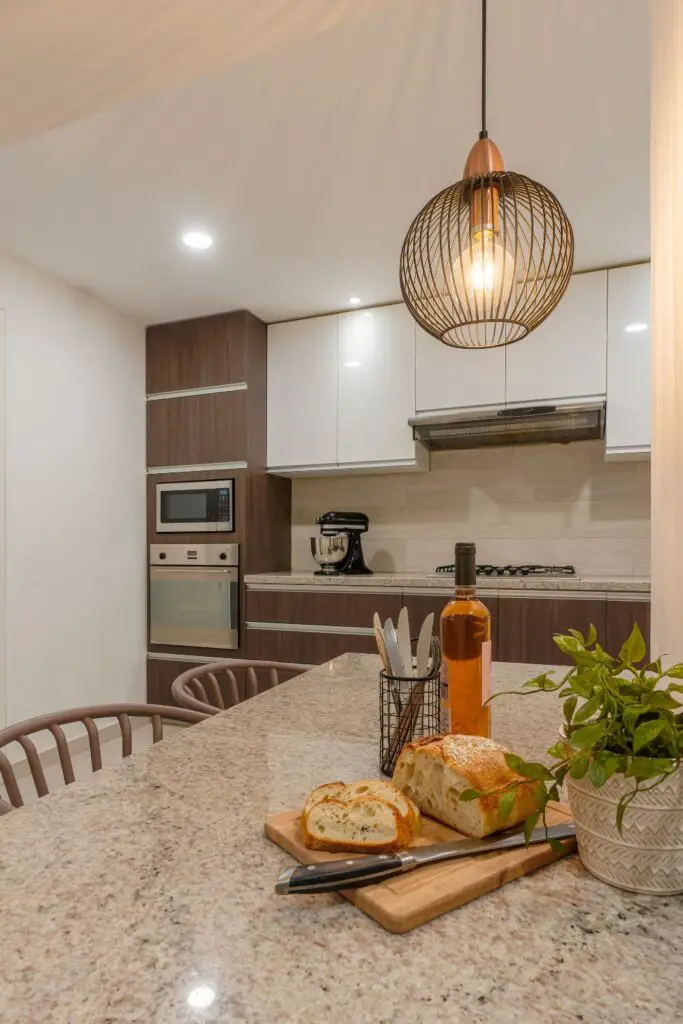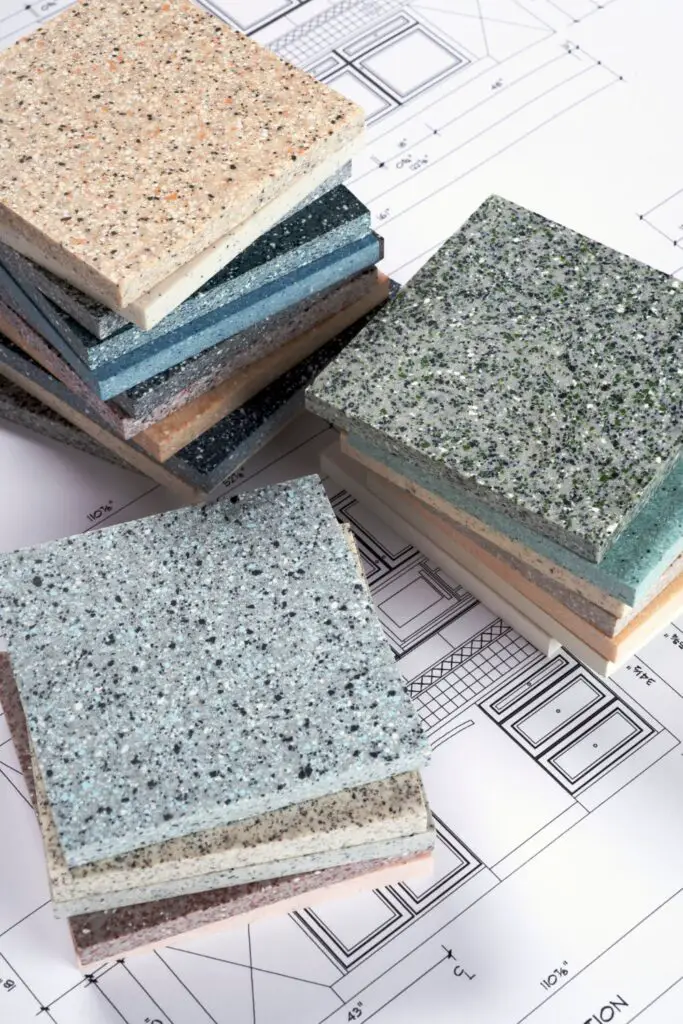Are you torn between dolomite vs granite kitchen countertops? Both are great natural stones that are durable, heat-resistant, and affordable. But, which option is better for your kitchen? Keep reading to find out the pros and cons of dolomite vs granite.
Are you renovating your kitchen and looking for a natural stone countertop?
You might be torn between granite and marble, two popular natural stones. However, do you know there’s a lesser-known stone that looks like marble but shares similar properties to granite?
I’m referring to dolomite, a natural stone that’s great for kitchen countertops.
Before you decide if dolomite is the material for you, you must first understand the key differences between dolomite and granite.
In this post, I will share everything you need to know about dolomite vs granite – what it is, how it’s made, its uses, and the pros and cons of each stone.
Read on to discover which stone is the best option for your kitchen countertops!

Related to Dolomite Vs Granite:
- Quartz vs Marble – Which is the better option for my kitchen?
- Travertine vs Marble – What’s the difference and which is the better option for my home?
- Limewash vs Whitewash – Which Technique Is Better For My Brick Home?
What is dolomite?

What it is: Dolomite is a sedimentary rock. In other words, it’s a natural stone that is found on the surface of the earth.
How it’s made: Dolomite is made from limestone and lime mud that come in contact with the magnesium in groundwater.
Texture: Smooth and glassy
Color: Greys and whites are the most common colors. However, you can also find dolomite in other colors such as brown, pink, black, and green.
Uses: Kitchen countertops, bathrooms, and feature walls
Cleaning instructions: Clean your dolomite countertops once daily. Do not use harsh, abrasive, or acidic cleaners, which include lemon juice or vinegar. Wipe all spills immediately with a soft cloth.
Maintenance: As with all natural stones, dolomite requires regular sealing to maintain its quality. Use coasters, trivets, and cutting boards to prevent stains, etch marks, and scratches.
Pros of dolomite
Beautiful and unique designs
Dolomite is a beautiful and classy stone. It looks very similar to marble, as it also has streaks or veins going across the surface. Since it’s a natural stone, no two slabs look alike.
More durable than marble
Although its appearance is comparable to marble, dolomite is more durable than marble. It is harder than marble, which makes it less susceptible to scratches, dents, and chips.
In addition, dolomite is not as porous as marble and doesn’t seem to absorb liquids as easily.
Heat and pressure resistant
Dolomite is resistant to heat and pressure, making it an excellent choice for kitchen countertops. This is its biggest competitive edge over quartz, as quartz cannot tolerate heat.
Easy to get
Dolomite can be found in abundance all over the world, which makes this material easy to find and obtain.
More affordable than marble
The best thing about dolomite is that it looks and feels like marble but costs a fraction of the price!
Cons of dolomite
Less durable than granite
Although dolomite is harder than marble, it is still less durable than granite. That means you can still scratch or chip it, especially when working with glass and metal without any safety measures in place.
Porous
Dolomite is also porous, which makes it susceptible to stains and etch marks.
Requires regular sealing
The best way to maintain a dolomite countertop is to seal it once a year. When unsealed, dolomite can be stained by liquids like oil, wine, and juices. However, these liquids are less likely to penetrate the stone if it is sealed consistently.
Less affordable than granite
Dolomite is usually more expensive than granite. The fabrication cost adds up because it takes more time to cut this natural stone.
What is granite?

What it is: Granite is a coarse igneous rock that is rich in quartz and feldspar. Just like dolomite, it’s also a natural stone.
How it’s made: Granite is formed beneath the earth’s surface through the cooling and solidifying of magma.
Texture: Although they are naturally coarse, they can be polished to create a glassy and smooth surface.
Color: Comes in a wide variety of speckled colors like white, black, blue, pink, and brown.
Cleaning instructions: Clean once a day using a soft cloth to dust the surface. Wipe it down with plain water or a mild soap. Avoid using harsh and abrasive cleaners containing acidic elements like lemon juice or vinegar.
Maintenance: Granite needs to be re-sealed annually to maintain a nonporous surface. White granite countertops usually need frequent resealing compared to dark countertops, as they are more likely to show stains. Always use coasters, trivets, and cutting boards to prevent scratches and other damages.
Pros of granite
Durable
Granite is far more durable than marble and dolomite. It is tough to chip or crack a granite countertop.
Affordable
Granite is widely available and used in many kitchens. It’s also easier to cut and work with, which makes it more affordable than dolomite and marble.
It comes in unique colors
Granite comes in a wide variety of unique colors, so it’s easy to find a color to match your interior style.
It doesn’t drop in value
Most importantly, granite kitchen countertops do not drop in value. If taken care of, granite can last a very long time. They are also considered a premium material, and can even increase your home value up to 25%.
Cons of Granite
Porous
Like all natural stones, granite is porous. This means liquids can penetrate its surface causing stains or etch marks.
Requires regular sealing
As a result, granite requires sealing at least once a year. This helps to protect the surface from absorbing any liquids and leaving stains or etch marks.
Difficult to repair
Unfortunately, granite countertops are difficult to repair. A professional can help with repairs, but it is unlikely they can get your granite countertop to look the way it did before.
Dolomite vs Granite – Which is better for your kitchen countertops?

So, should you choose dolomite or granite for your kitchen countertop? Both are beautiful natural stones and share similar pros and cons.
To choose the best material for you and your family, you must first consider how you will use it and which stone will visually match your overall kitchen design.
If you like the look of marble and want a grey and white countertop, dolomite is an amazing alternative to marble.
However, you may want to consider granite if your kitchen has heavy traffic and you are not fussed about the color of your kitchen countertops.
I hope you learned a thing or two about dolomite vs granite. Let me know which stone you choose for your kitchen countertop in the comments below!
Looking for different stones for your home? Check out these blog posts before you decide:


Comparing dolomite and granite was insightful. The breakdown of their characteristics helps in making an informed choice. It’s evident that both have unique merits, allowing readers to weigh the options based on their preferences and needs.